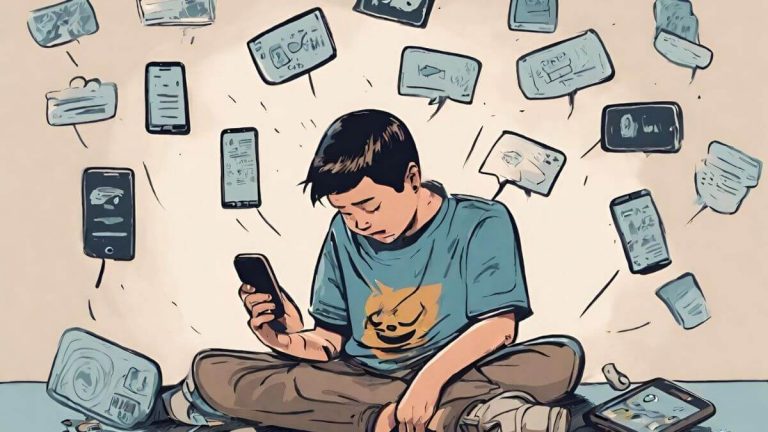The digital age has revolutionized communication and opened a world of opportunities for children. However, this online landscape also presents new challenges, particularly the issue of cyberbullying. Understanding cyberbullying, its impact on mental health, and strategies to promote online safety are crucial steps in protecting children’s well-being in this evolving environment.
What is Cyberbullying?
Cyberbullying is the use of electronic communication to bully a person, typically by sending messages of an intimidating or threatening nature. It can take many forms, including:
- Sending mean or hurtful texts, emails, or messages on social media.
- Posting embarrassing photos or videos of someone online without their consent.
- Excluding someone from online groups or activities.
- Impersonating someone online and spreading rumors about them.
Related Reading: Responsible Use of Social Media
The Impact of Cyberbullying on Mental Health
Cyberbullying can have a devastating impact on a child’s mental health. Unlike traditional bullying, which may be confined to a physical location, cyberbullying can be relentless and inescapable. Children who are cyberbullied may experience:
- Anxiety and depression
- Low self-esteem and social isolation
- Difficulty sleeping and eating disorders
- Thoughts of self-harm or suicide
Related Reading: Social Media’s Impact on Teen Mental Health
Promoting Online Safety and Mental Health Awareness
There are several steps parents, educators, and communities can take to promote online safety and mental health awareness:
Open Communication
- Create a safe space for children to talk about their online experiences, both positive and negative.
- Encourage them to come to you if they are being cyberbullied.
- Talk to them about responsible online behavior and the importance of cyberbullying prevention.
Education and Awareness
- Educate children about the different forms of cyberbullying and how to identify them.
- Teach them strategies for responding to cyberbullying, such as blocking bullies and reporting incidents.
- Promote digital citizenship programs in schools that emphasize online safety and respect.
Parental Monitoring and Supervision
- Set clear guidelines for children’s online activity, including screen time limits.
- Talk to them about the websites and apps they use.
- Use parental controls and monitoring software where appropriate.
Building Resilience
- Help children develop a strong sense of self-worth and healthy coping mechanisms for dealing with stress.
- Encourage them to participate in activities that build their confidence and social skills.
- Promote a positive online environment by fostering kindness and empathy.
Reporting and Bystander Intervention
- Encourage children to report cyberbullying to a trusted adult, such as a parent, teacher, or counselor.
- Empower them to be bystanders who intervene when they witness cyberbullying.
- Schools and social media platforms should have clear reporting procedures in place.
Mental Health Resources
- Make children aware of mental health resources available to them, both online and offline.
- Encourage them to seek help if they are struggling with the emotional impact of cyberbullying.
Community Collaboration
- Schools, parents, and community organizations need to work together to create a comprehensive approach to cyberbullying prevention.
- Advocate for stronger legislation and policies that address cyberbullying.
Cyberbullying is a serious issue that can have lasting consequences for children’s well-being. By working together to promote online safety, mental health awareness, and responsible digital citizenship, we can create a safer and more positive online environment for our children to thrive.
Additional Tips
- Encourage children to be critical consumers of online content.
- Teach them not to share personal information online with strangers.
- Remind them that what they post online can have a lasting impact.
By following these tips and working together, we can create a digital world where children feel safe, respected, and empowered.
References:


